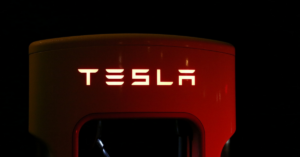Despite the Indian automobile industry experiencing a sharp decline in FY19, the electric vehicle market is expected to grow at a CAGR of 43.13% from 2019 to 2030
The key opportunities in adopting EVs in the shared mobility space are that the industry in the Southeast Asia region is flourishing as customers become conscious of the environmental footprint
This article explores the future of mobility through the rise of the shared mobility concept and the increasing adoption of electric vehicles
Asia is one of the most significant contributors to highlighting the importance of decarbonisation within global markets. With more than 56% of the world’s population residing in the region, Asia has the potential for significant economic growth.
Though, it is quite important for this growth to have a green foundation. This has translated to increased commitment towards achieving zero emissions or shifting to electric vehicles by 2030.
This article explores the future of mobility through the rise of the shared mobility concept and the increasing adoption of electric vehicles.
Growth Drivers And Opportunities
As per a BIS Research study titled ‘IoT Solutions for Micro Mobility Market‘, the market is expected to reach $26.26 Bn by 2031 from $5.28 Bn in 2021, growing with a CAGR of 17.39% during the forecasted period of 2021-2031.
The growth in the global IoT solutions for micro mobility market is expected to be driven by the following factors:
- Increasing micro mobility sharing services
- Heavy investments in micro mobility
- Growing demand for first and last-mile transportation
- Increasing road congestion
- Ease of parking
- Saturation within the automobile sector
The key opportunities in adopting EVs in the shared mobility space are that the industry in the Southeast Asia region is flourishing as customers become conscious of the environmental footprint. This has led to the further incorporation of electric vehicles in shared mobility.
Moreover, several governments have taken a proactive approach to encourage the shift and help companies develop a feasible ecosystem. This comes with a heavy focus on product experience, which will be critical to getting the customers to adopt right.
Shared mobility offers the convenience of conveyance at affordable costs to consumers. To keep up with the fast-paced world, mobility is changing at an explosive rate. There have been over 2K new and credible players in the mobility space since 2015 with China making up the world’s most important EV market. 66% of the world’s electric cars and 90% of the world’s electric buses are present in China.
Impact Of Shared Mobility & EVs On The Indian Automobile Market
The Indian electric vehicle ecosystem is currently in a nascent phase. The government’s push to ensure EV adoption through subsidies and tax benefits has helped propel market growth.
Despite the Indian automobile industry experiencing a sharp decline in FY19, the electric vehicle market is expected to grow at a CAGR of 43.13% from 2019 to 2030, according to Research and Markets’ India Electric Vehicle Ecosystem Market Outlook 2030.
With the Bharat Stage 6 (BS6) norms becoming applicable from April 2020, electric vehicles have become more price-competitive to conventionally fueled vehicles, thus accelerating electric vehicle sales in the country. The government’s target for 30% adoption of electric vehicles by 2030 will be majorly driven by the electrification of two-wheeler, three-wheeler, and commercial vehicles. The lower adoption rate of electric vehicles in the passenger vehicle segment is expected to have a limited impact on achieving the targets.
The pandemic has sparked a global movement toward a zero-waste sustainable lifestyle, which is on the verge of revolution. India is in an excellent position to promote and take the lead in the transition to zero-emission commuter options from conventional ones.
The Faster Adoption and Manufacturing of (Hybrid &) Electric Vehicles in India (FAME-India) scheme has got the approval to extend its phase II. The FAME II scheme’s recent redesign will provide a push in the right direction to reach this goal. These incentives will enable clean mobility in India’s future, improve the country’s transportation infrastructure, and forever change how Indians choose to get around.
Cutting-edge charging infrastructure is also promoting the adoption of electric vehicles in shared mobility. Once a user gets accustomed to an EV, they will realise that the cost per kilometre is INR 3 and INR 10 for two-wheelers and four-wheelers respectively, compared to fuel-driven vehicles, given that the petrol cost is INR 100 and the electricity rate is INR 10 per unit.
What The Future Holds
The growth of electric vehicles will also have cascading effects on different sectors of the economy, with battery storage being one of the key areas. The battery forms the backbone of EV, constituting 40%-50% of the cost of EV.
Emerging technologies, such as battery swapping, can enhance the user experience and extend a larger playground for shared emobility players to penetrate the market.
Sustainability with superior experiences in time saving and comfort is fast becoming the norm. Moreover, if a solution is cost-effective, it proves to be even better. With only a fraction of the running costs compared to their respective crude oil counterparts, EVs in shared mobility are the true pinnacle of sustainability and future-ready societies.










